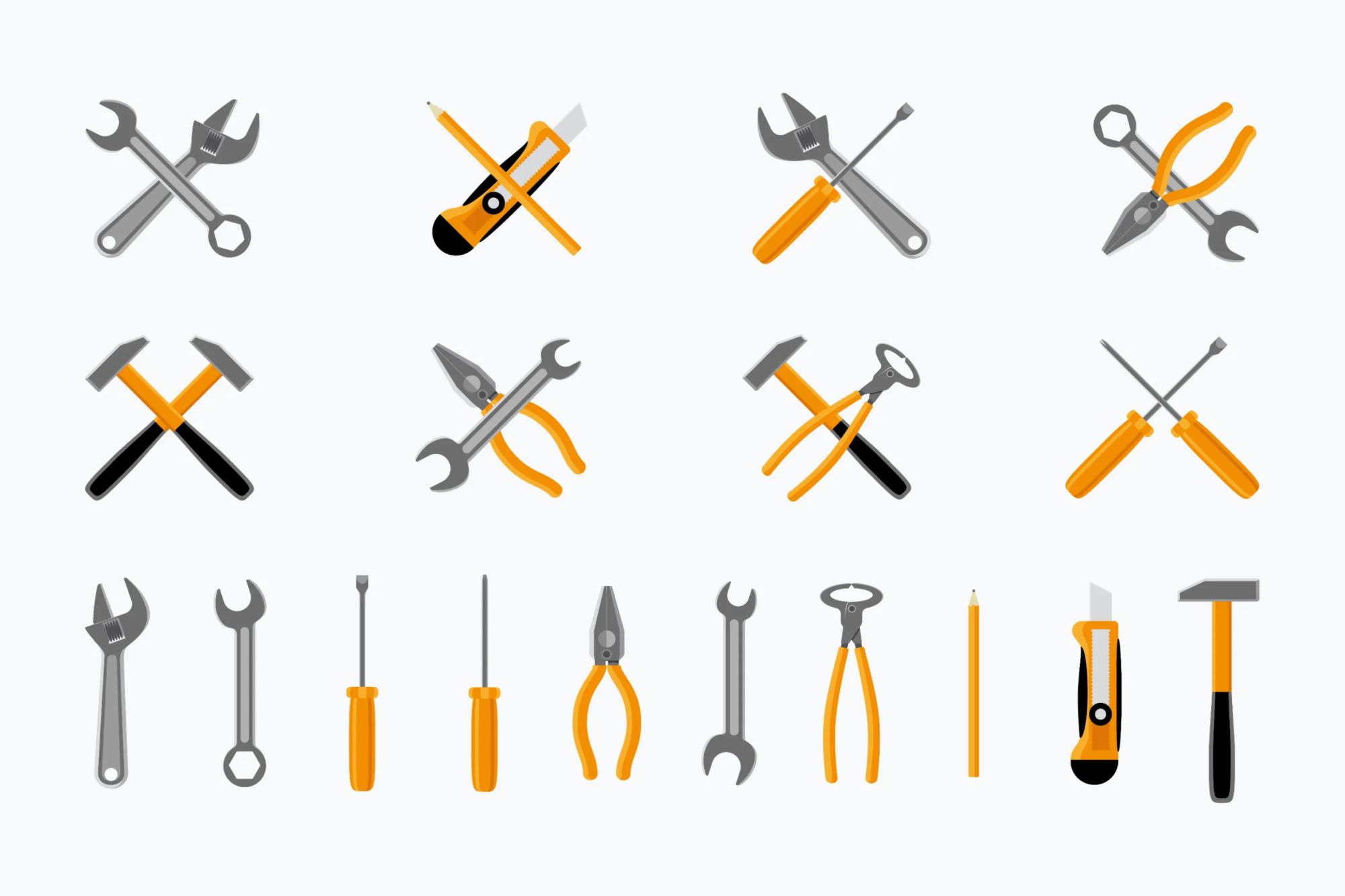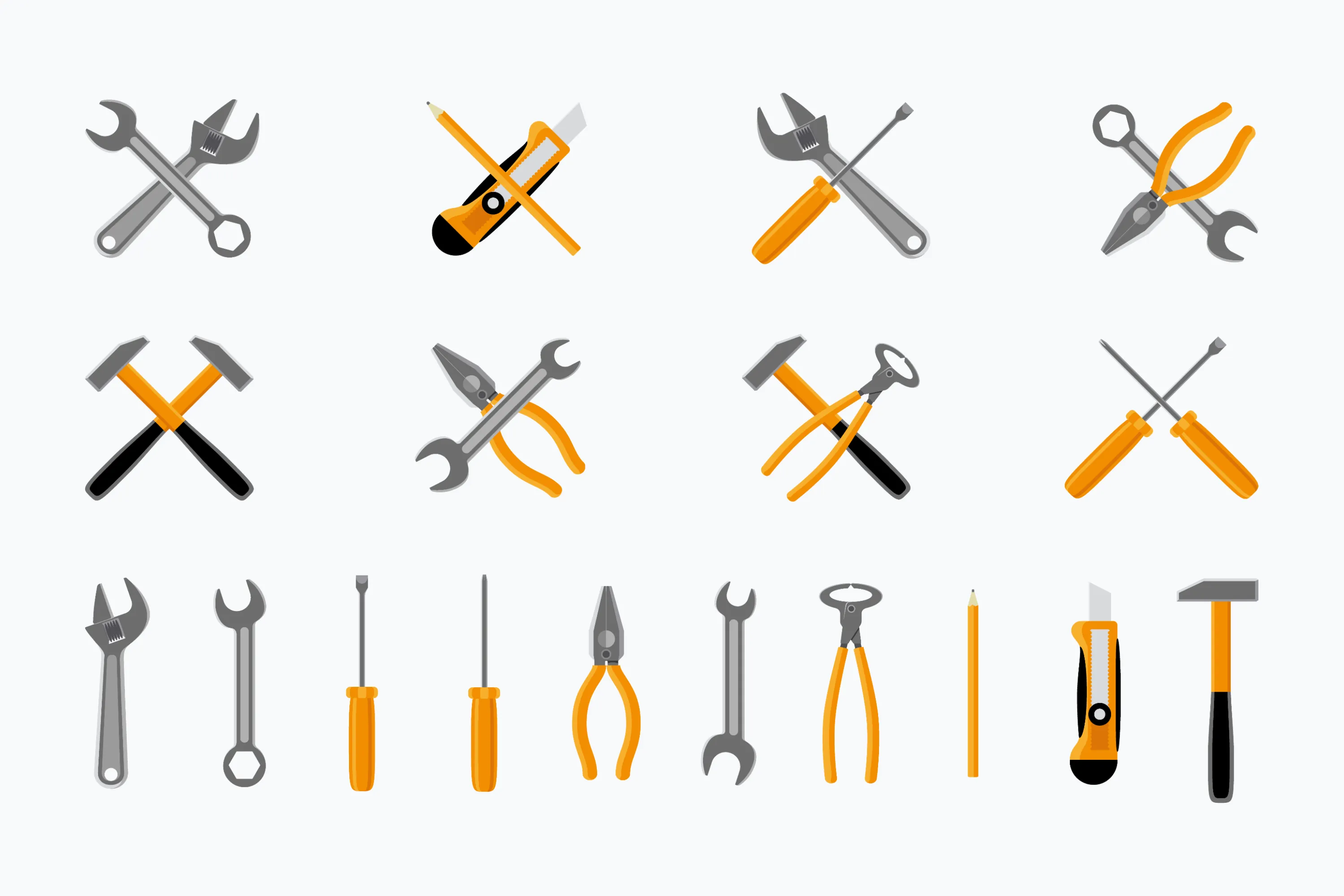Case study: Building a secure, Synology-based always-available data system for a law firm
Contents
ToggleIntroduction
In the fast-paced world of law, access to critical client files isn’t just a convenience, it’s the backbone of every case, every legal strategy, and ultimately, every client’s success. For law firms, data isn’t just data; it’s sensitive, confidential information that demands the highest levels of security, accessibility, and reliability. Downtime, data loss, or sluggish file access can lead to lost billable hours, compromised client trust, and even severe legal compliance issues.
The high stakes of legal data management
We recently partnered with “E&C” (a fictional client, as we prioritize the confidentiality and security of our actual partners), a growing law firm that recognized their existing data infrastructure was becoming a critical vulnerability. Their challenge: how to achieve an “always-on”, secure, and resilient storage solution that could keep pace with their demanding practice.
Note: For confidentiality reasons, the law firm in this case study is represented by a fictional company name. The challenges and solutions are real, but identifying details have been changed to protect client privacy.
The Challenge: E&C’s Data Dilemma
E&C’s previous setup relied on an aging legal file server that was no longer fit for purpose. This created a cascade of problems:
- Slow performance. Legal teams experienced frustrating delays accessing and saving large documents, directly translating to billable hours lost.
- Data security risks. The legacy system lacked modern protections, raising serious concerns about law firm data security and potential vulnerabilities to cyber threats like ransomware.
- Inadequate backup. Their existing backup solution was cumbersome, slow, and did not provide the robust offsite backup necessary for true disaster recovery. This meant significant risk to their business continuity plan in the event of a local disaster.
- Limited remote access: With an increasingly mobile workforce, the firm struggled to provide secure remote access for attorneys and staff working from different locations.
E&C knew they needed a complete overhaul, not just a patch. They sought a solution that would deliver unwavering reliability, bulletproof security, and seamless accessibility for their entire team.
Key project highlights
Here’s how our solution transformed E&C’s operations:
| Metric | Detail | Description |
| 0% | Downtime | Since deployment, the firm has experienced zero unscheduled data access downtime, eliminating lost billable hours. |
| 85% | Faster access | Reported increase in file retrieval and saving speeds for all staff, drastically improving productivity and reducing frustration. |
| 20 Minutes | Recovery time | Reduced potential disaster recovery time (RTO) from days (under the old system) to mere minutes via the remote backup solution. |
| 100% | Data coverage | Achieved complete offsite backup coverage for all critical case files, ensuring full business continuity and compliance. |
Looking for a proven data strategy?
Contact our team today to implement secure legal storage solutions for your firm.
Malaysia Public Holidays in 2024 & 2025
Malaysia observes 11 national public holidays annually[1], showcasing its rich cultural diversity. These celebrations encompass various cultural and religious festivals throughout the year. Notably, state-specific holiday variations exist across the country, adding complexity to the national calendar.
Some holidays vary by state. Johor, Kedah, Kelantan, and Terengganu follow a different weekend schedule (Friday-Saturday) compared to the rest of the country (Saturday-Sunday). This can lead to minor date variations for specific holidays. Understanding these nuances is crucial for both local and international stakeholders navigating Malaysia's vibrant cultural landscape.
Source: malaysia.gov / Important Dates General Holidays Tarikh Penting Kelepasan Am — 2024
Malaysia Public Holidays (Nationwide)
| Holiday Name | Date in 2024 | Date in 2025 |
|---|---|---|
| New Year's Day Tahun Baru | January 1 (Monday) | January 1 (Wednesday) |
| Federal Territory Day Hari Wilayah Persekutuan | February 1 (Thursday) | February 1 (Saturday) |
| Birthday of Prophet Muhammad Maulidur Rasul | March 1 (Friday) | February 28 (Friday) |
| Good Friday | March 29 (Friday) | - |
| Easter Monday | April 1 (Monday) | - |
| Labour Day Hari Pekerja | May 1 (Wednesday) | May 1 (Thursday) |
| Wesak Day Hari Wesak | May 16 (Thursday) | May 8 (Thursday) |
| King's Birthday Hari Keputeraan Yang di-Pertuan Agong | June 8 (Saturday) | June 6 (Friday) |
| National Day Hari Kebangsaan | August 31 (Saturday) | August 31 (Sunday) |
| Malaysia Day Hari Malaysia | September 16 (Monday) | September 16 (Tuesday) |
| Birthday of the Prophet Muhammad Maulidur Rasul — Replacement Holiday | September 17 (Tuesday) | Not Applicable |
| Deepavali | October 30 (Wednesday) | October 29 (Wednesday) |
| Christmas Day Hari Krismas | December 25 (Wednesday) | December 25 (Thursday) |
Malaysia School Holidays (Group A or Group B)
While not public holidays, school holidays can impact business hours and overall activity. Note: Malaysia has two groups with slightly different school break schedules.
Group A — Academic Calendar Session 2024/2025
Johor, Kedah, Kelantan, Terengganu
| School Holidays | Start | End |
|---|---|---|
| First Day of School | March 10, 2024 (Sunday) | - |
| Term 1 Holidays | May 24, 2024 (Friday) | June 2, 2024 (Sunday) |
| Term 2 Holidays | September 13, 2024 (Friday) | September 21, 2024 (Saturday) |
| Term 3 Holidays | December 20, 2024 (Friday) | December 28, 2024 (Saturday) |
| End of School Year Holidays | January 17, 2025 (Friday) | February 15, 2025 (Saturday) |
Group B — Academic Calendar Session 2024/2025
Kuala Lumpur, Labuan, Melaka, Negeri Sembilan, Pahang, Perlis, Penang, Perak, Putrajaya, Sabah, Sarawak, Selangor.
| School Holidays | Start | End |
|---|---|---|
| First Day of School | March 11, 2024 (Monday) | - |
| Term 1 Holidays | May 25, 2024 (Saturday) | June 2, 2024 (Sunday) |
| Term 2 Holidays | September 14, 2024 (Saturday) | September 22, 2024 (Sunday) |
| Term 3 Holidays | December 21, 2024 (Saturday) | December 29, 2024 (Sunday) |
| End of School Year Holidays | January 18, 2025 (Saturday) | February 16, 2025 (Sunday) |
Other school holidays
| School Holidays | Start | End | States |
|---|---|---|---|
| Hari Raya Aidilfitri Holidays | April 7, 2024 (Sunday) | April 11, 2024 (Thursday) | Group A |
| Hari Raya Aidilfitri Holidays | April 8, 2024 (Monday) | April 12, 2024 (Friday) | Group B |
| Deepavali Holidays | October 30, 2024 (Wednesday) | October 31, 2024 (Thursday) | Group A |
| Deepavali Holidays | October 30, 2024 (Wednesday) | November 1, 2024 (Friday) | All states in Group B except Sarawak |
| Deepavali Holidays | October 31, 2024 (Thursday) | October 31, 2024 (Thursday) | Sarawak |
Source: Malaysia Ministry of Education (MOE / KKM) — KALENDAR AKADEMIK SESI 2024/2025 / Public Holidays Global
School Holidays vs. Public Holidays.
Malaysia's school holidays (generally March-February) follow a separate schedule and may not coincide with public holidays.
Planning tip.
Malaysia's public holidays create exciting opportunities for long weekends. Consider strategically using your personal leave days to maximize travel or leisure time during these periods.
Building Better Apps, Faster: The Cloud & DevOps Advantage
Contents
ToggleKey takeaways
- Cloud & DevOps can significantly improve your business’s scalability, efficiency, and cost savings.
- To get started, create a clear roadmap, embrace the Cloud (find the right provider, move to the cloud, automate updates), and automate your workflow.
Are you thinking about adopting cloud computing and DevOps? You’re on the right track. These solutions can significantly enhance your business’s scalability, efficiency, and cost savings. Let’s dive into why your business might need these solutions.
Signs you need Cloud & DevOps
- Tech headaches: Are you constantly battling IT issues? Slow servers, outdated software, and data security worries can cripple your productivity. Cloud & DevOps can help you move to a more reliable and secure infrastructure.
- Limited scalability: Is your current setup inflexible? Cloud & DevOps enable you to scale your resources up or down quickly as your business grows. No more worrying about expensive hardware upgrades.
- Slow development cycles: Does it take forever to launch new features or updates? Cloud & DevOps streamline the development process, allowing you to innovate faster and stay competitive.
- Fragmented tools: Are you using a mishmash of software tools that don’t talk to each other? Cloud & DevOps promote integration and automation, saving you time and effort.
Take advantage of Cloud & DevOps
Implementing Cloud & DevOps solutions can be daunting for small businesses. Here are three strategies to help you get started.
Start with a clear roadmap
Create a detailed plan for your cloud and DevOps initiatives. Outline your goals, steps, and timelines.
- Define clear objectives for your cloud and DevOps projects.
- Break down the implementation process into manageable phases.
- Set realistic timelines and milestones.
- Assign responsibilities to team members.
A clear roadmap ensures everyone is on the same page and helps track progress. It also makes it easier to adjust plans as needed.
Embrace the Cloud:
Using the right cloud provider ensures your business gets the necessary support and resources. It also helps avoid costly migrations later.
- Ditch the Server: Move your data and applications to the cloud. This means accessing them from anywhere with an internet connection, eliminating the need for physical servers and their maintenance headaches.
- Pay-As-You-Go: Cloud services are based on a pay-as-you-go model. You only pay for the resources you use, saving you money compared to traditional upfront hardware costs.
- Automatic Updates: No more scrambling for software updates. Cloud platforms handle them automatically, ensuring you have the latest security patches and features.
Automate your workflow
Implement automation in your DevOps practices to increase efficiency and reduce errors.
- Streamline Development: Cloud & DevOps tools automate repetitive tasks in the development process, freeing your team to focus on innovation.
- Continuous Integration & Delivery (CI/CD): Automate code testing and deployment, allowing you to push updates faster and with fewer errors.
- Infrastructure as Code (IaC): Define your infrastructure (servers, networks) as code, making it easy to provision and manage resources consistently.
Automation streamlines workflows and ensures consistent processes. It also frees up your team to focus on more strategic tasks.
Making the most of Cloud & DevOps
Adopting Cloud & DevOps solutions can transform your business, offering greater scalability, cost savings, and efficiency. By starting with a clear roadmap, choosing the right provider, and embracing automation, your small business can thrive in today’s competitive landscape.
Building a skilled team
A skilled team is crucial for the successful implementation of cloud and DevOps solutions. Having the right skills in-house ensures smooth implementation and management of these technologies.
- Assess your current team’s skills and identify gaps.
- Provide training and development opportunities.
- Hire experts with experience in cloud and DevOps.
- Foster a culture of continuous learning.
A skilled team can effectively manage your cloud and DevOps initiatives, ensuring long-term success.
Leveraging external expertise
Partnering with external experts like Scellus can provide additional support and knowledge. External experts bring experience and insights that can enhance your cloud and DevOps strategies.
- Identify areas where you need additional support.
- Research and partner with reputable service providers.
- Collaborate closely with external experts to achieve your goals.
- Continuously evaluate the partnership to ensure it meets your needs.
External expertise can help fill skill gaps and provide valuable guidance, ensuring the success of your cloud and DevOps initiatives.
Staying updated with industry trends
Keeping up with industry trends ensures your cloud and DevOps strategies remain relevant and effective. The tech landscape is constantly evolving. Staying informed helps you adapt and stay competitive.
- Follow industry news and updates.
- Attend conferences and webinars.
- Participate in professional networks and forums.
- Continuously learn and adapt new practices.
Staying updated with industry trends ensures your strategies remain effective and aligned with best practices.
Conclusion: Take the next step
Implementing Cloud & DevOps solutions can seem challenging, but with the right strategies and support, your small business can reap the benefits. By starting with a clear roadmap, choosing the right provider, embracing automation, building a skilled team, leveraging external expertise, and staying updated with industry trends, you’ll be well on your way to transforming your business.
→
Ready to get started?
Contact us today and let our experts guide you through every step of the process, from identifying your needs to implementing the perfect solution.
Reach out to Scellus for a free consultation to explore how our cloud and DevOps solutions can help your business succeed. Talk to our team to get started.
Building the right tool: A guide to identifying & prioritizing software needs for your business
Contents
ToggleIn today’s digital landscape, businesses of all sizes are increasingly turning to software solutions to streamline operations, enhance customer experiences, and achieve growth objectives. However, with a vast array of options available, identifying and prioritizing the right software needs can be a daunting task.
This comprehensive guide will equip you with the knowledge and tools necessary to navigate this process effectively. We’ll delve into understanding your business goals, identifying user needs, brainstorming features, and prioritizing them using established techniques. By following these steps, you’ll be well on your way to developing software that becomes a cornerstone for your business success.
Defining the Why: Unveiling Your Business Goals
The foundation of any successful software project lies in a clear understanding of your business goals. These goals should be the driving force behind every decision you make when developing your software. Here’s how to get started:
- Start with the Big Picture: Take a step back and ask yourself: What are the overarching objectives for your business? Are you aiming to increase sales by 20% in the next year? Improve customer satisfaction by 10%? Streamline internal processes by 30%? Articulating these overarching goals provides a clear direction for your software needs.
- Identify Pain Points: No business operates perfectly. Look for areas in your current workflow that are causing problems. Are there bottlenecks slowing down operations? Manual tasks causing inefficiencies? Perhaps you lack real-time data visibility across departments, hindering informed decision-making. Pinpointing these pain points will highlight areas where software can provide significant value.
- Imagine the Ideal Outcome: Once you’ve identified your pain points, envision what your business would look like if these problems were solved. How would it impact your bottom line? How would enhanced workflows translate into improved customer satisfaction or employee productivity? This visualization exercise helps solidify the potential impact of well-designed software.
Putting Users First: Understanding Who Makes Your Business Tick
Software exists to serve its users. Therefore, a crucial step in identifying your needs involves understanding the individuals who will interact with your software on a daily basis. Here’s how to focus on user needs:
- Identify Your Primary Users: Who are the individuals who will benefit most from your software? This could be your sales team, customer service representatives, marketing department, or even your customers themselves. Understanding their roles and daily tasks is essential to build a user-centric solution.
- Unearthing Frustrations: Don’t shy away from delving into user frustrations. Conduct interviews or surveys to understand what aspects of their current workflow slow them down. What repetitive tasks could be automated? What information do they constantly need access to but currently lack? Identifying these frustrations will point you towards features that address user pain points directly.
- Designing the Ideal Workflow: Imagine how software can empower your users to perform their jobs more efficiently and effectively. For example, could a customer service application provide instant access to customer history, facilitating faster and more personalized resolution of issues? By envisioning the ideal user experience, you can identify features that directly address user needs.
Brainstorming Bonanza: Generating a Feature List
Now that you understand your business goals and user needs, it’s time to unleash your creativity! This is the brainstorming stage where you generate a comprehensive list of features your software could potentially offer.
- Dream Big, Start Broad: Don’t be afraid to dream big! List every feature that comes to mind, regardless of its complexity. This is the time to think freely and explore all possibilities. Restricting yourself at this stage can hinder the discovery of truly innovative solutions.
- Prioritizing with Impact: Once you have a comprehensive list, it’s time to prioritize. Evaluate each feature based on how effectively it addresses your pre-defined business goals and how well it aligns with user needs. Features that directly solve a critical pain point or offer significant business value should be prioritized over those with a more tangential impact.
- The MVP Approach: Consider the concept of a Minimum Viable Product (MVP). An MVP is a stripped-down version of your software that includes the core set of features needed to deliver initial value. Focusing on an MVP allows you to test your software with real users, gather feedback, and iterate before investing heavily in complex functionalities.
Prioritization Powerhouse: Techniques to Refine Your Feature List
Having a laundry list of features is great, but for effective software development, prioritization is key. Refine your feature list and ensure you’re focusing on the functionalities that will deliver the most value by utilizing the MoSCoW Method: This prioritization framework categorizes features based on their urgency and importance.
MoSCoW stands for:
- Must-Have: These are features absolutely essential for the core functionality of your software. Without them, the software wouldn’t be able to fulfill its intended purpose.
- Should-Have: These are important features that significantly enhance the user experience and overall value of the software. While not strictly necessary, their absence would negatively impact the software’s effectiveness.
- Could-Have: These are desirable features that would be nice to have but are not essential for the core functionality or user experience. These can be considered for future development based on available resources and user feedback.
- Won’t-Have: These features are deemed non-essential and can be eliminated from the current development cycle. This category can be revisited later if priorities shift or user needs evolve.

The MoSCoW method provides a structured approach to classifying features based on their criticality, helping you focus on building a solid foundation before adding bells and whistles.
- Value vs. Complexity Matrix: This prioritization tool involves plotting features on a graph with two axes: Value (user and business) and Complexity (development effort). Features positioned in the high-value, low-complexity quadrant should be prioritized for development as they offer significant benefits with minimal investment. Conversely, features in the low-value, high-complexity quadrant might be considered for later development or elimination altogether. This visual representation helps identify features that deliver the biggest bang for the buck.
- Effort vs. Impact Matrix: Similar to the value vs. complexity matrix, this method focuses on development effort and the expected impact on your business. Features with high impact and low development effort are ideal candidates for prioritization. Features requiring significant development time and resources might be scaled back or delayed depending on their anticipated impact.
By utilizing these prioritization techniques, you can make informed decisions about which features to develop first and ensure your software delivers the most value within your budget and timeframe.

Continuous Evolution: Embracing Feedback and Adapting to Change
The software development process is rarely a one-time endeavor. As your business evolves and user needs change, so too should your software. Here’s how to embrace continuous improvement:
- Gather Feedback Regularly: Once your software is deployed, actively solicit feedback from users. Conduct surveys, user interviews, or A/B testing to understand how users interact with the software and identify areas for improvement.
- Be Agile and Adaptable: Business priorities can shift, and user needs can evolve. Be prepared to revisit your prioritization regularly and adapt your software accordingly. This might involve adding new features, modifying existing ones, or even retiring functionalities that are no longer relevant.
- Focus on Long-Term Value: While a well-defined MVP is crucial, it’s important to maintain a vision for the long-term development of your software. Use the insights gained from user feedback to develop a roadmap for future iterations, ensuring your software remains relevant and valuable to your business over time.
By fostering a culture of continuous improvement, you can ensure your software remains a dynamic tool that adapts alongside your business and empowers you to achieve your ever-evolving goals.
This comprehensive guide has equipped you with the knowledge and tools necessary to identify and prioritize your software needs effectively. Remember, successful software development is a collaborative effort. By understanding your business goals, focusing on user needs, prioritizing features strategically, and embracing continuous improvement, you can build software that becomes a cornerstone for your business success.
→
Tired of off-the-shelf software that doesn’t quite fit?
Contact us today and let our experts guide you through every step of the process, from identifying your needs to implementing the perfect solution.
Scellus Software Development specializes in crafting custom software solutions tailored to your unique business needs and goals.
Here’s what sets us apart:
- Collaborative Approach: We work closely with you to understand your challenges, envision the ideal outcome, and prioritize features that deliver maximum impact.
- Expert Developers: Our team of skilled developers leverages cutting-edge technologies to build robust, scalable, and user-friendly software.
- Focus on Value: We don’t just build software, we build value. Our solutions are designed to streamline workflows, improve efficiency, and empower your team to achieve more.
Contact us today for a free consultation. Talk to our team to get started.
Content briefing guide: Building blocks for website growth
Contents
ToggleThis content briefing guide help you to identify & prioritize content creation for optimal website growth. By understanding your audience and goals, you’ll craft content that attracts visitors, compels action, and establishes your brand as an authority.
Step 1: Defining your content goals
- Increase Brand Awareness: Is your primary aim to introduce your brand and its offerings to a new audience?
- Generate Leads: Do you want visitors to subscribe to your newsletter, download an ebook, or contact your sales team?
- Boost Sales: Is your goal to drive direct product purchases or service inquiries through your website?
- Improve Customer Education: Do you aim to educate customers on product use, answer common questions, or offer troubleshooting guides?
Step 2: Understanding your target audience
- Demographics: Who are you trying to reach? Age, location, income, and profession all play a role in content preferences.
- Interests: What are your ideal customers passionate about? What problems do they face? Understanding their desires informs content that resonates.
- Pain Points: What challenges or frustrations does your target audience encounter? Content that addresses these pain points positions you as a solution provider.
Step 3: Identifying high-impact content
- Blog Posts: Regular blog posts addressing industry trends, offering practical advice, or showcasing case studies establish thought leadership and attract organic traffic.
- Landing Pages: Targeted landing pages with clear calls to action (CTAs) are crucial for lead generation and driving conversions.
- Product Pages: Comprehensive product descriptions, user guides, and comparison charts educate potential buyers and increase purchase confidence.
- White Papers and Ebooks: In-depth content addressing complex topics can be gated behind email signups, generating valuable leads.
- Infographics and Videos: Visually engaging content simplifies complex information and grabs attention, making it ideal for social media sharing.
Step 4: Prioritization and planning
- Content Audit: Analyze existing website content to identify gaps and areas for improvement.
- Keyword Research: Identify relevant keywords and search terms your target audience uses, then optimize your content for those terms.
- Content Calendar: Develop a content calendar that outlines topics, deadlines, and assigned writers to ensure consistent content flow.
- Promotion Strategy: Plan how you’ll promote your content through social media, email marketing, and influencer outreach to maximize reach.
Step 5: Embracing content creation best practices
- Focus on Value: Craft content that provides genuine value to your audience. Address their pain points, answer their questions, and offer solutions.
- Maintain Consistency: Establish a regular content publishing schedule to keep your audience engaged and coming back for more.
- Optimize for Search Engines: Research and incorporate relevant keywords throughout your content to improve search engine ranking.
- Embrace Different Formats: Experiment with various content formats like blog posts, infographics, videos, and ebooks to cater to diverse learning preferences.
- Prioritize Readability: Ensure your content is clear, concise, and easy to understand for your target audience.
- Incorporate Visuals: High-quality images, videos, and infographics enhance content engagement and improve user experience.
Step 6: Measure and manage
- Track Website Traffic: Monitor website traffic to understand how your content is attracting visitors.
- Analyze User Engagement: Analyze metrics like time spent on page and bounce rate to gauge user engagement with your content.
- Track Conversions: Monitor conversion rates to measure how effectively your content is driving desired actions (e.g., signups, sales).
- Utilize Analytics Tools: Leverage website analytics tools to gain insights into user behavior and content performance.
Bonus tip: Content quality is king
While quantity is important, prioritize quality content that delivers value to your audience. Invest in thorough research, clear writing, and professional visuals to establish trust and credibility.
Remember: Content creation is an ongoing process. Regularly analyze website traffic and content performance to adapt your strategy and continuously improve your website’s growth potential.
→
Feeling overwhelmed? We can help!
Crafting a winning content strategy requires expertise and resources. Don’t waste time navigating the process alone. Let our team of content creation specialists handle the heavy lifting!
We’ll work with you to:
- Define your content goals and target audience.
- Develop a data-driven content calendar.
- Create high-quality, engaging content across all formats.
- Optimize your content for search engines and conversions.
- Promote your content for maximum reach.
Scellus Digital Marketing services helps you streamline the whole content creation process from keyword research to topic expansion — resulting in better leads and more closed sales. Talk to our team to get started.
Eid Mubarak to everyone celebrating! May your homes be filled with laughter, love, and delicious feasts.
We would like to inform you that Scellus will be closed in observance of Hari Raya Aidilfitri on Wednesday, April 10, 2024 and Thursday, April 11, 2024.
We will resume business as usual on Friday, April 12, 2024.
#EidMubarak #eid2024 #selamathariraya #aidilfitri #maafzahirdanbatin #EidAlFitr
Space Grotesk | A Modern Sans Serif Typeface
Contents
ToggleSpace Grotesk is a proportional sans-serif typeface variant based on Colophon Foundry’s fixed-width Space Mono family (2016).
Background.
Originally designed by Florian Karsten in 2018, Space Grotesk retains the monospace’s idiosyncratic details while optimizing for improved readability at non-display sizes.
Weights.
Space Grotesk is available in five weights without italics: Light, Regular, Medium, SemiBold and Bold. It supports Latin Extended-A character set and several OpenType features such as ligatures, fractions, slashed zero and stylistic sets . It is released as a free font under the SIL Open Font License and can be downloaded from Google Fonts , 1001 Fonts or GitHub.
Space Grotesk has a geometric and futuristic appearance with rounded terminals, diagonal cuts and oval counters. It is suitable for headlines, logos, posters, web design and other creative projects that require a modern and clean look. Some of its distinctive features are:
- The uppercase G has a horizontal bar that extends beyond the circle.
- The lowercase g has a single-story loop with a diagonal cut at the bottom right.
- The uppercase Q has a tail that crosses the circle.
- The lowercase y has a curved tail that bends to the left.
- The numerals have varying widths and heights.
Alternatives.
If you like Space Grotesk, you might also be interested in some other fonts that are similar to it. Here are some suggestions:
- Graphik: A minimalist sans-serif typeface designed by Christian Schwartz in 2009. It has a similar geometric structure and rounded corners as Space Grotesk but with more uniform proportions and less quirky details.
- Circular: A geometric sans-serif typeface designed by Laurenz Brunner in 2013. It has a similar circular shape and diagonal cuts as Space Grotesk but with more open apertures and softer curves.
- Avenir: A classic sans-serif typeface designed by Adrian Frutiger in 1988. It has a similar humanist touch and elegant style as Space Grotesk but with more contrast and variation in stroke widths.
Space Grotesk is a versatile and modern typeface that can add some personality and flair to your design projects. If you are looking for a fresh and futuristic font that is easy to read at any size, you should give Space Grotesk a try!
A modern sans serif for brands.
If you are looking for a fresh and versatile font for your design projects, you might want to check out Space Grotesk. This font is a proportional sans serif variant based on Colophon Foundry’s fixed-width Space Mono family (2016) . Originally designed by Florian Karsten in 2018, Space Grotesk retains the monospace’s idiosyncratic details while optimizing for improved readability at non-display sizes.
Space Grotesk has a geometric and futuristic appearance, with rounded corners, diagonal terminals, and quirky curves. It comes in five weights (Light, Regular, Medium, SemiBold, and Bold) without italics . It supports Latin Vietnamese, Pinyin, and over 200 languages.
Space Grotesk is perfect for brands that want to stand out with a modern and distinctive look. It can be used for logos, headlines, posters, websites, apps, magazines, packaging, and more. It has a friendly and playful vibe that can appeal to a wide audience.
Some examples of brands that use Space Grotesk are:
- NordVPN: A popular VPN service that uses Space Grotesk Bold for its logo and website.
- Lemonade: An insurance company that uses Space Grotesk SemiBold for its logo and website.
- Miro: An online collaboration platform that uses Space Grotesk Medium for its logo and website.
If you like Space Grotesk but want to explore more options, here are some similar open source fonts that you can try:
- Graphik: A sans serif font with clean and geometric shapes. It has nine weights with matching italics.
- Inter: A sans serif font with humanist features. It has 18 weights with matching italics.
- Public Sans: A sans serif font with neutral and balanced proportions. It has nine weights with matching italics.
All these fonts are free to use under the SIL Open Font License or similar licenses.
Space Grotesk is a great choice for designers who want to create modern and memorable brands. It combines the charm of a monospace font with the flexibility of a proportional font. You can download it from Google Fonts or GitHub, or use it directly on your web projects.
Do you have any questions or feedback about Space Grotesk? Let us know in the comments below!
Optimize your Google Business Profile (GBP) for Malaysian market
Contents
ToggleGoogle Business Profile (GBP), previously known as Google My Business (GMB), is your free local listing tool. Optimize it to attract customers and stand out in Malaysian searches. Let’s dive into the essentials of optimizing your GBP to ensure your business stands out from the crowd.
The basics
First things first, your GMB profile needs to be as complete and accurate as possible. This means updating your business name, address, and phone number (NAP), as well as your hours of operation. Accuracy here is non-negotiable; it builds trust with Google and your potential customers.
Choosing the right business category can significantly impact your visibility. Be as specific as possible—this helps Google understand exactly what your business offers, improving your chances of showing up in relevant searches.
Enhancing visibility
A picture is worth a thousand words, and in the case of your GMB profile, it could be worth countless clicks. Businesses with quality photos see significantly more engagement. Upload high-resolution images of your products, services, and premises. Videos offer a dynamic peek into your business, making your profile even more engaging. Remember, your visuals are a reflection of your brand, so make them count!

Collecting & managing reviews
Reviews are the backbone of your business’s online reputation. A steady stream of positive reviews can greatly enhance your GMB profile’s effectiveness. Encourage satisfied customers to leave feedback by making the process as simple as possible. Responding to reviews—both positive and negative—shows that you value customer feedback and are committed to improving their experience.
Using posts
GMB posts are a fantastic way to keep your customers informed and engaged. Whether it’s promoting a new product, announcing a sale, or sharing helpful tips, these posts can enhance your profile’s appeal. Keep your posts relevant and exciting to ensure they resonate with your audience.
Analyze insights, improve
Google provides valuable insights into how customers interact with your GMB profile. From how many people called your business directly from the listing to how many requested directions, these insights are goldmines of information. Use this data to refine your profile, tailor your posts, and ultimately, make more informed business decisions.
Conclusion
Optimizing your Google My Business profile is a continuous process, but the payoff is immense. By ensuring your profile is complete, engaging, and responsive, you’re not just improving your online visibility; you’re also building a stronger connection with your customers. Remember, every detail counts when it comes to standing out in the digital marketplace. Start optimizing today and watch your business grow!

Tips and tricks for optimizing your Google Business Profile
Optimizing your Google Business Profile (GBP) or Google My Business (GMB) profile can significantly boost your SMB’s visibility and customer engagement in Malaysia. Here are some insider tips and tricks to make your GMB profile stand out:
- Use High-Quality, Geo-Tagged Images: Visuals play a crucial role in attracting potential customers. Use clear, high-resolution images of your business, products, and services. Geo-tagging these images can also improve local search visibility, as it helps Google understand the geographical relevance of your business.
- Incorporate Keywords Naturally: While filling out your GMB profile, naturally integrate keywords related to your business, services, and location. This helps improve your profile’s search visibility. Avoid keyword stuffing, as it can negatively impact the user experience.
- Stay Active with Regular Posts: Google My Business allows you to post updates, offers, events, and news directly on your profile. Regularly posting fresh content keeps your profile active and engaging for potential customers, boosting your visibility in searches.
- Encourage and Respond to Reviews Promptly: Reviews are a powerful tool for improving trust and visibility. Encourage happy customers to leave positive reviews and respond to all reviews in a timely and professional manner. This demonstrates that you value customer feedback and can positively influence your business reputation.
- Utilize the Q&A Feature: The Q&A feature on your GMB profile allows potential customers to ask questions about your business. Actively monitor and answer these questions to provide valuable information. You can also preemptively add frequently asked questions to your profile.
- Optimize for Mobile Users: With the increasing use of mobile devices for searches, ensure your GMB profile is optimized for mobile users. This includes having a mobile-friendly website linked to your profile and ensuring your contact information is easily clickable on mobile devices.
- Monitor Your GMB Insights: GMB offers insights that provide valuable information about how customers find and interact with your profile. Regularly review these insights to understand customer behavior better and adjust your profile accordingly to improve performance.
- Leverage the Booking Feature: If your business takes appointments, utilize GMB’s booking feature. This makes it easier for customers to book appointments directly from your profile, enhancing the user experience and potentially increasing conversions.
FAQs
Q1: How often should I update my Google Business Profile?
Keeping your Google Business Profile updated is crucial for maintaining accuracy and engagement with your customers. Here’s a closer look at the updating frequency:
- Immediate updates: Changes in operating hours, contact information, or location need to be updated as soon as possible to prevent any customer inconvenience.
- Seasonal updates: Adjust your business hours for holidays or special events to keep your customers well-informed.
- Regular content updates: Aim for at least one post a week to keep your profile lively and engaging. This could range from news about your business, promotional offers, to new arrivals or services.
Q2: Can I optimize my GMB profile for specific keywords?
Yes, incorporating specific, relevant keywords into your GMB profile can enhance your search visibility. Here are some tips for effective keyword optimization:
- Natural integration: Weave keywords into your business description, your posts, and even in responses to reviews, but keep the language natural and engaging.
- Focus on relevance: Choose keywords that reflect your business offerings and match the search intent of your target audience. This includes your services, location, and unique aspects of your business.
- Avoid over-optimization: While important, overusing keywords can detract from the user experience. Google prioritizes content that benefits the user, so maintain a balance.
Q3: Is there a cost to optimizing my Google Business Profile (GBP) / Google My Business (GMB) profile?
Optimizing your Google Business Profile doesn’t require financial investment, but it does require your time and effort. Here’s what to consider:
- Time investment: Keeping your profile up-to-date, engaging with customer reviews, posting regularly, and analyzing your performance takes time.
- Professional photos: High-quality photos can significantly enhance your profile’s appeal. If you decide to hire a professional photographer, this would be an actual cost to consider.
- Learning and adaptation: Keeping abreast of Google’s best practices and evolving your strategy accordingly can be time-consuming but is crucial for maximizing your profile’s effectiveness.
→
Ready to get started?
Contact us today and let our experts guide you through every step of the process, from identifying your needs to implementing the perfect solution.
Reach out to Scellus for a free consultation to explore how our solutions can help your business succeed. Talk to our team to get started.
We would like to wish everyone a Happy Chinese New Year 2022!
May the year of the tiger 🐯 bring you joy, hope and wealth! Wishing you a prosperous Chinese New Year 2022 🏮🧧🧨!
In conjunction with the Chinese New Year, we will be closing and will be back on Friday, February 4, 2022.
![]()
#Scellus #HappyLunarNewYear #LunarNewYear #HappyChineseNewYear #ChineseNewYear #CNY #2022 #LunarYear #Greetings #Wish #GongXiFaCai #GongXiFaChai
It's that time of the year! Merry Christmas and Happy New Year everyone!
We would like to take this opportunity to thank you for doing business with us and to wish you a very Merry Christmas and a Happy New Year.
In conjunction with the nationwide celebration of Christmas & New Year, Scellus will be closed on Thursday (Dec 20, 2021). We will resume business as usual on Monday (Jan 3, 2022).
Warm Regards,
Team Scellus
Illustration: Christmas is Near! by Margarita Ivanchikova









